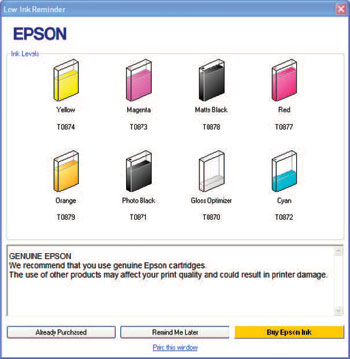In this article we’ll focus on meeting your output needs; in other words, choosing a printer. It’s essential to choose a printer that matches your output requirements in terms of print size, quality and longevity and also, perhaps, versatility and printing speed. Different photographers will place different priorities on these characteristics because no printer on the current market can provide an all-in-one solution for every camera user.







